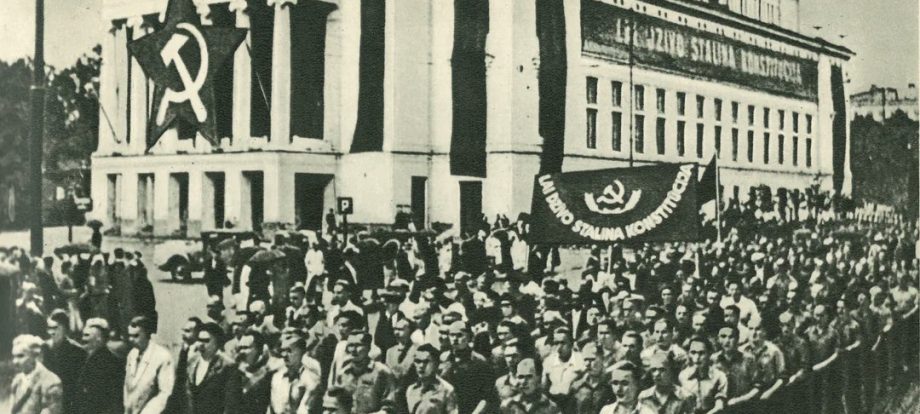
The June Revolution and Restoration of Socialism in the Baltics
Today is the anniversary of the June Revolution and the Restoration of Socialism in the Baltics.
As usual, the fascist scum spread lies by pretending to be “victims” of imaginary “Soviet occupation”.
The Baltic working class played an instrumental role in the overthrow of fascism.
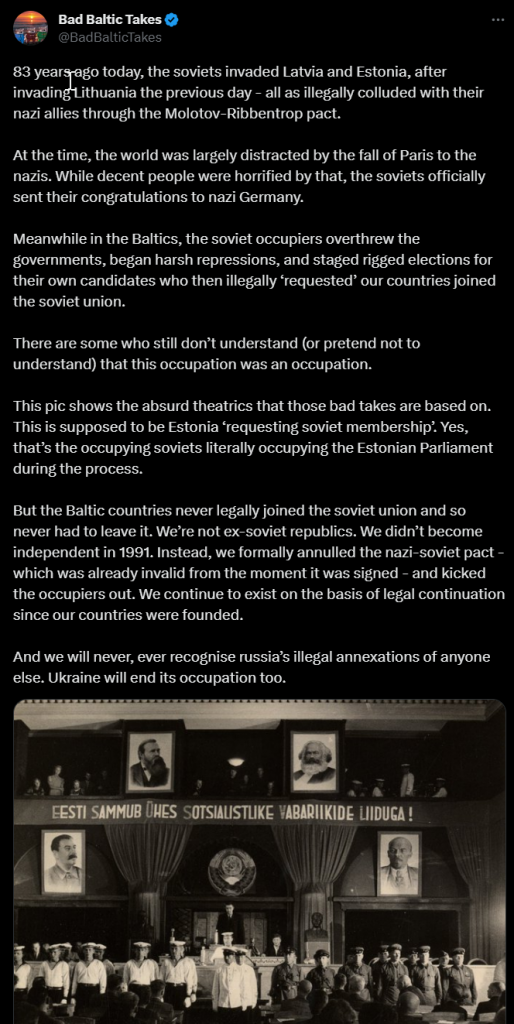
Before the 1940 Revolutions, the Baltics were ruled by fascist tyrannies, headed by Antanas Smetona (Lithuania), Kārlis Ulmanis (Latvia), and Konstantin Päts (Estonia), respectively. All three came to power after a fascist coup, inspired by Mussolini’s and Hitler’s regimes.
When fascists cry about the “unfairness” of socialist elections, they deliberately omit some very “inconvenient” facts:
- The Baltic tyrannies canceled the elections after coups (Latvia and Estonia). In Lithuania, only pro-fascist forces could run.
- Trade unions were banned.
– Opposition parties were banned and repressed, while fascist and pro-German organizations (such as “Pērkonkrusts”) operated openly. – Martial law (“the State of Siege”). – The parliament was disbanded and the constitution was canceled (Latvia and Estonia). – Total press censorship.
– Bans on protests, strikes, and mass gatherings. etc. etc. After the bloody suppression of socialism in 1919, the Baltics became a poor periphery for Germany and Britain, providing them with cheap raw materials. The Baltic economy was based on resource extraction and agriculture
The Communist parties in all three countries were immediately banned, and the communists were routinely killed by the secret police. For instance, Viktor Kignissepp, leader of the Estonian Communist Party was shot by the Estonian PolPol in 1922 and then dumped in the Baltic Sea.
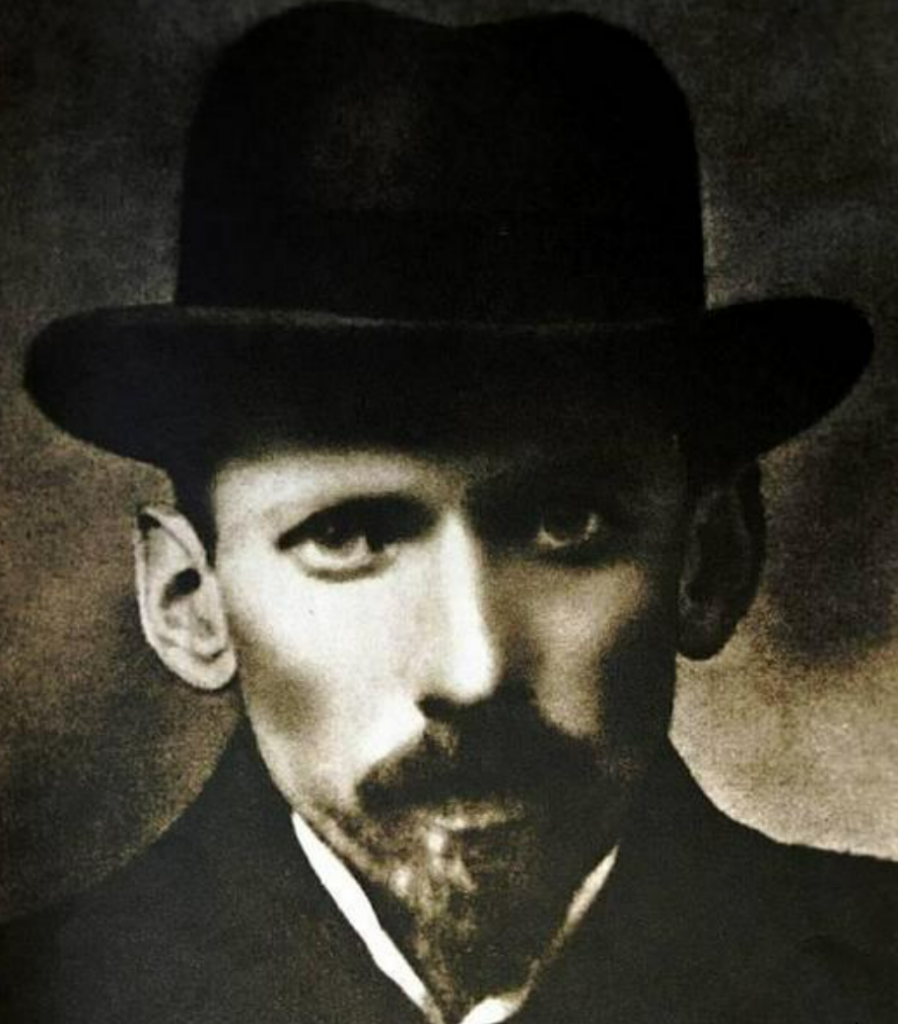
Similar atrocities took place in Latvia.
- 11 children from the communist youth were killed by the firing squad in Valmiera in 1919. 16 children were put in prison.
- Three Latvian Bolshevik party leaders were shot by secret police in 1921: Šilfs-Jaunzems and Arājs-Bērce.
– In 1922, secret police agents killed Puriņš-Upmalis, leader of the Latvian Communist Youth. In 1924 alone, there were 889 cases of fascists attacking protesting workers and peasants. The Baltic regimes banned May 1 celebrations and used live ammunition against workers.
And so on and so on. The Baltic economies were entirely export-oriented, which, unsurprisingly, collapsed during the Great Depression. With a massive surge in unemployment, many people had to literally work for food in the countryside. In the cities, 4-day work weeks were standard.
By 1940, the Baltics depended entirely on Western credit, with interest payments exceeding 1/5th of their entire budget! Another 20% went to the military. Banking and industry were heavily monopolized, with Germans and British firms controlling more than 2/3 of all assets.
The Baltics aligned themselves with German interests and signed non-aggression pacts in early 1939, thus acting as a springboard for the future invasion of the USSR. Smetona even considered stationing German troops in Lithuania to secure his power in case of a popular uprising.
Strikes and protests were becoming more and more common, while the Baltic capitalists pushed for 10-hour, 12-hour, and even 14-hour work days! Meanwhile, the Baltic communists gathered strength and chose June as the date of their uprising. National strikes then commenced.
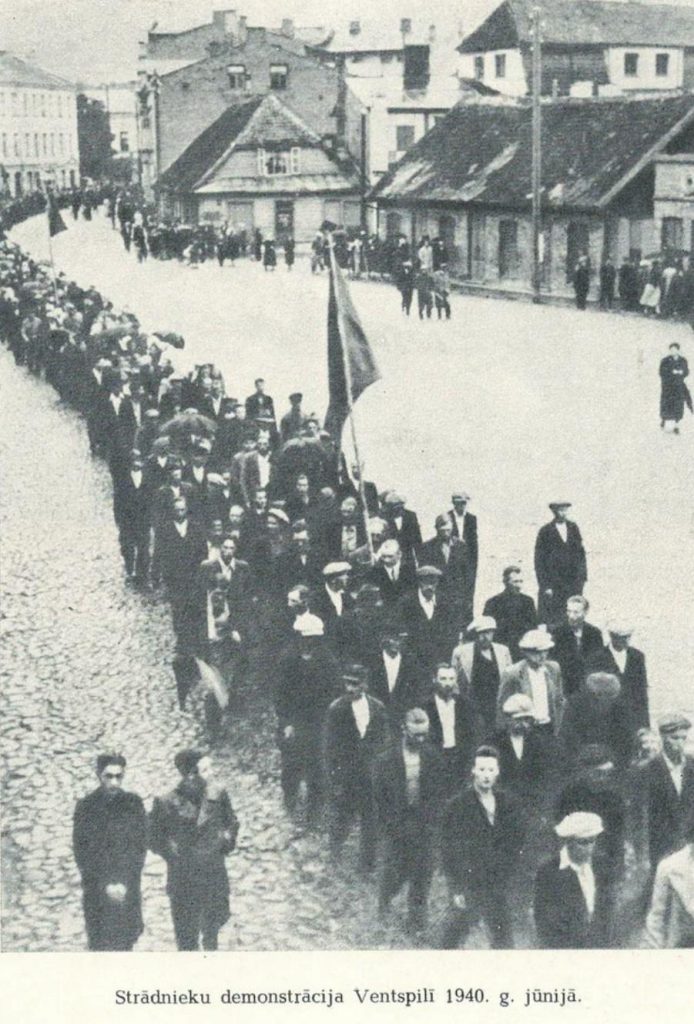
The communists and organized workers blocked off major roads, trapping the troops in their barracks. All three Baltic armies declared neutrality, and the fascist paramilitaries were disarmed. Smetona fled Lithuania, while Ulmanis and Päts, realizing their defeat, resigned.
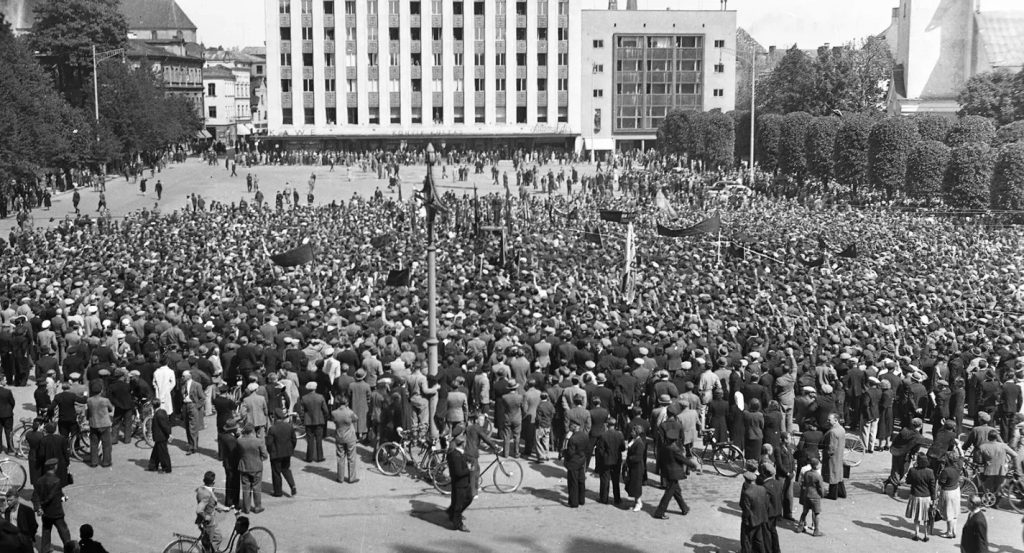
Without German support, the Baltic fascist tyrannies collapsed like a house of cards. The nationalists were astonished by how wide the opposition was. It was also vigorously supported by the liberally-minded bourgeoisie, intellectuals, and even military officers.
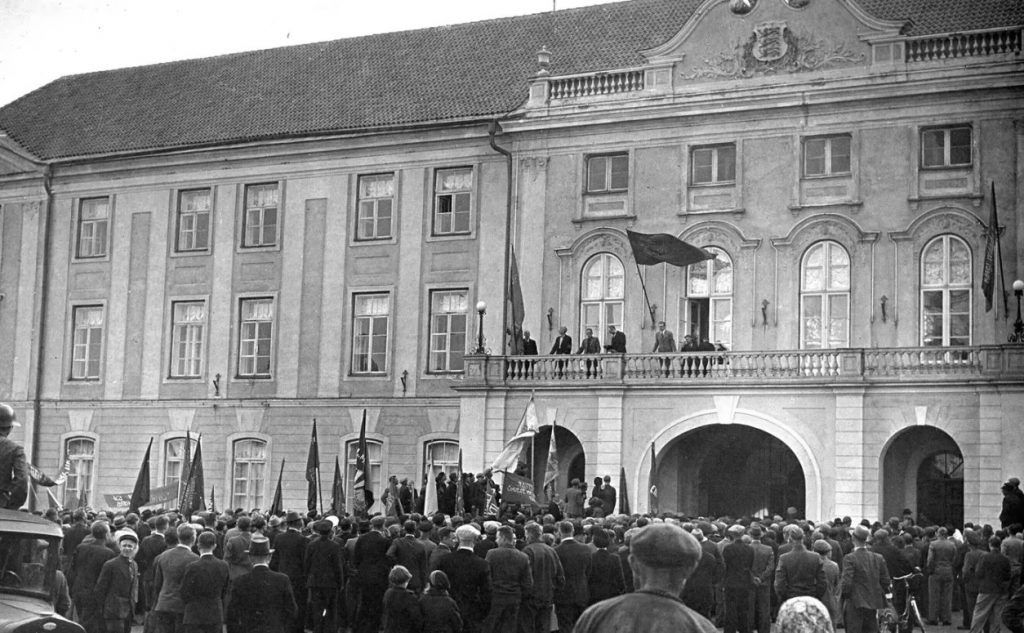
The People’s governments were formed, led by Premier Gedvilas in Lithuania, Dr. Kirhenšteins in Latvia, and Dr. Vares in Estonia. Political prisoners were released, the constitution was restored, and new elections were held on the basis of universal, direct, secret balloting.
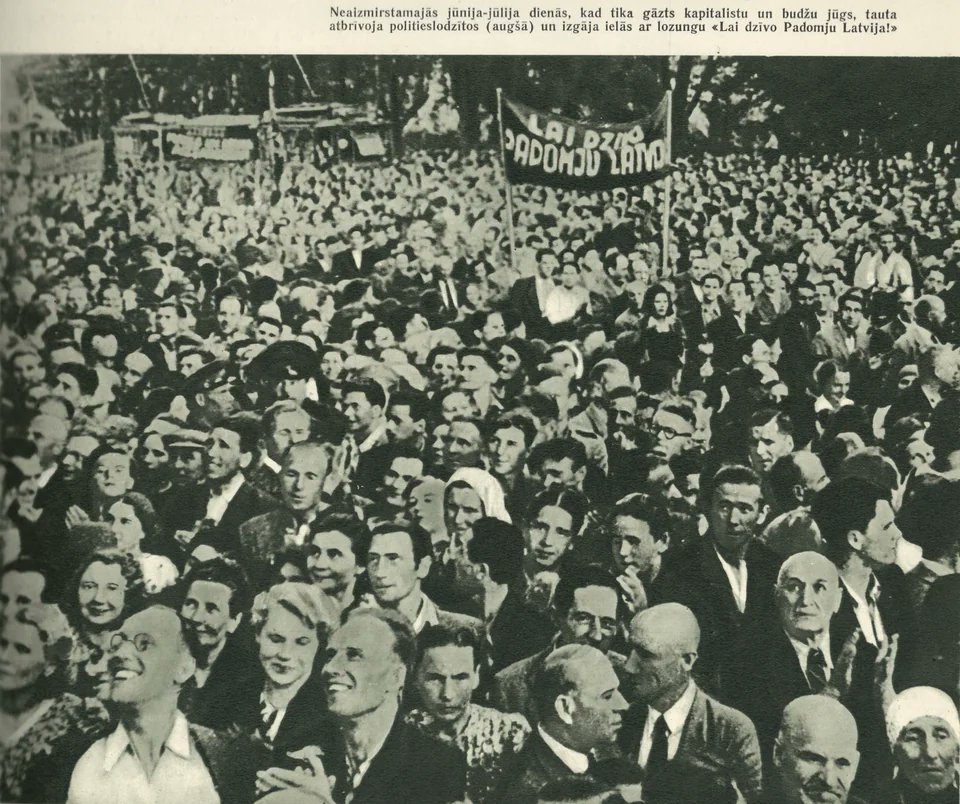
The nationalists spread the myth of “rigged” elections, which, again, is a lie. First of all, all candidates, ranging from communists to social democrats and even social liberals, were members of the broad United Front. Second, the fascists have no right to speak about elections.
All of these facts and countless photographs prove that the overthrow of fascism was a genuine effort by the Baltic working class to free itself from fascist oppression. The imperialist forces, despite their best efforts, could not stifle the resistance of the Baltic people!
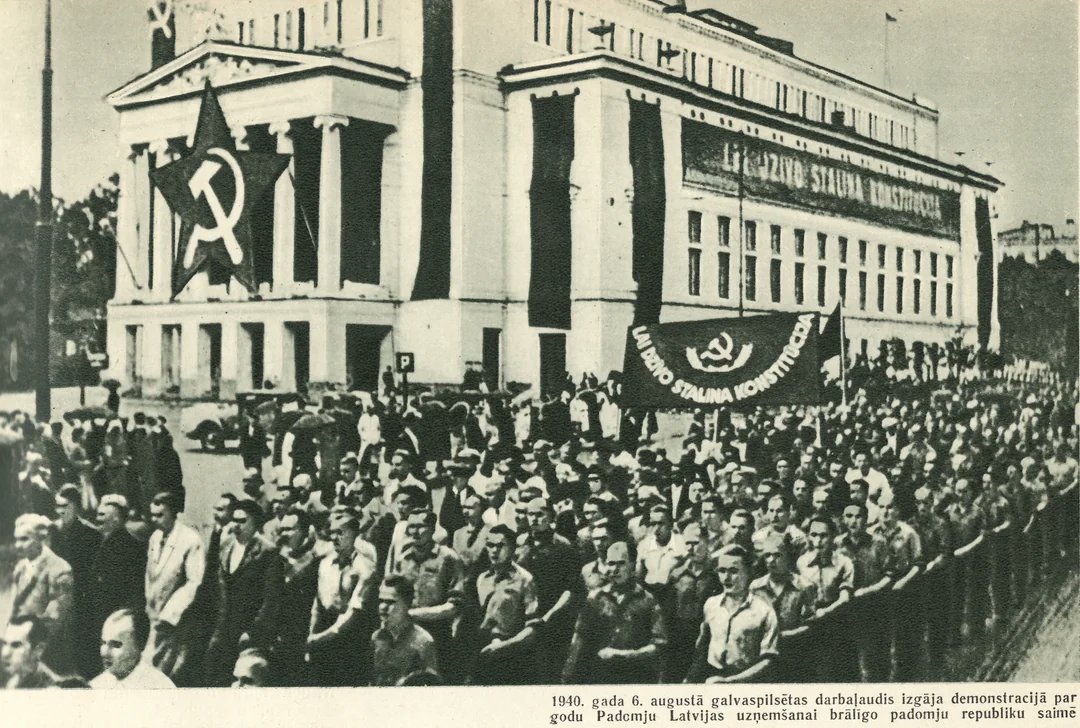
Were the 1991 referenda there viewed as fair?
People were tricked by false promises of “great wealth”, should they leave the USSR. The nationalists, using pseudo-socialist rhetoric, promised freedom and equality. Yet the first thing they did was to strip almost 1 million people of their citizenship (see “non-citizens”).
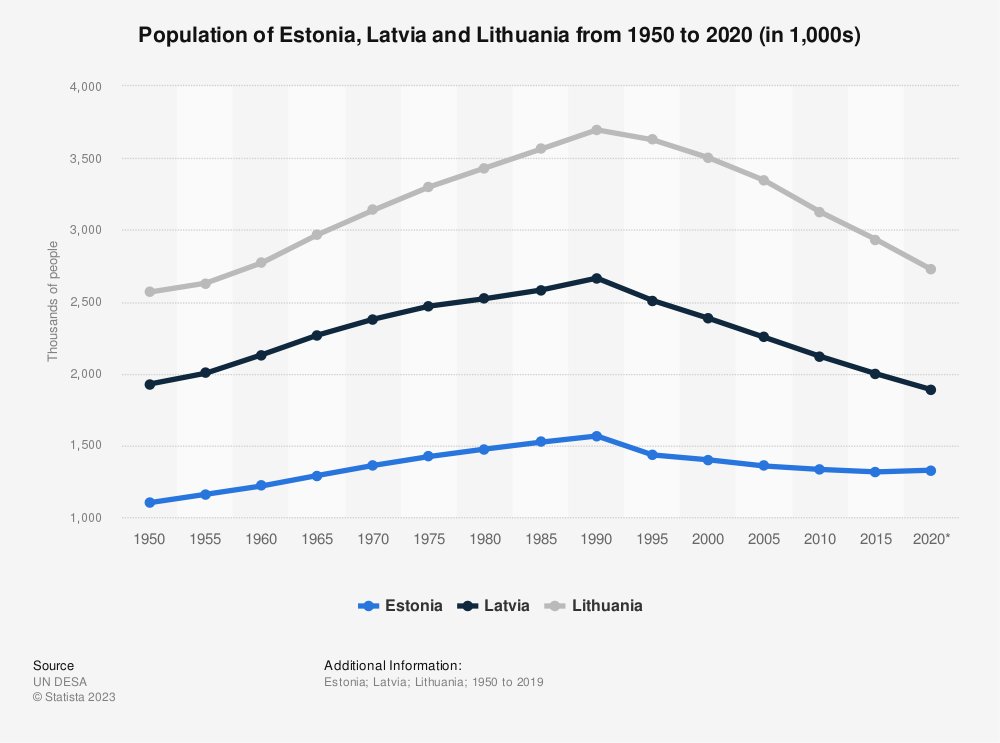
The monument to the Red Latvian Riflemen is still there (address: Latviešu strēlnieku laukums 1). But the fascists might choose to demolish it too like they already did with hundreds of Soviet monuments.
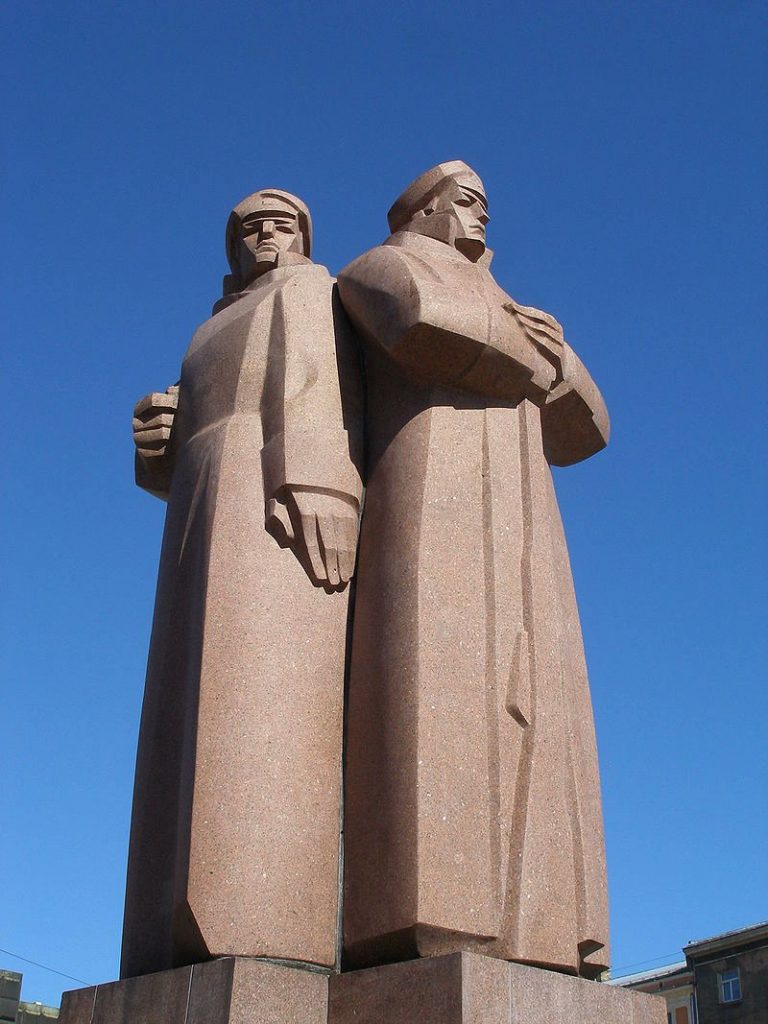
I’ve mainly used local sources in Latvian and Russian. A lot of the books I have are in this repo: https://padomjugramata.ucoz.com/board/jaunums/1
But English sources are available: 1) The Baltic Riddle by G. Meiksins: https://core.ac.uk/download/pdf/18549393.pdf
2) Phillip Bonosky – Devils In Amber: https://archive.org/details/devilsinamberbal00bono